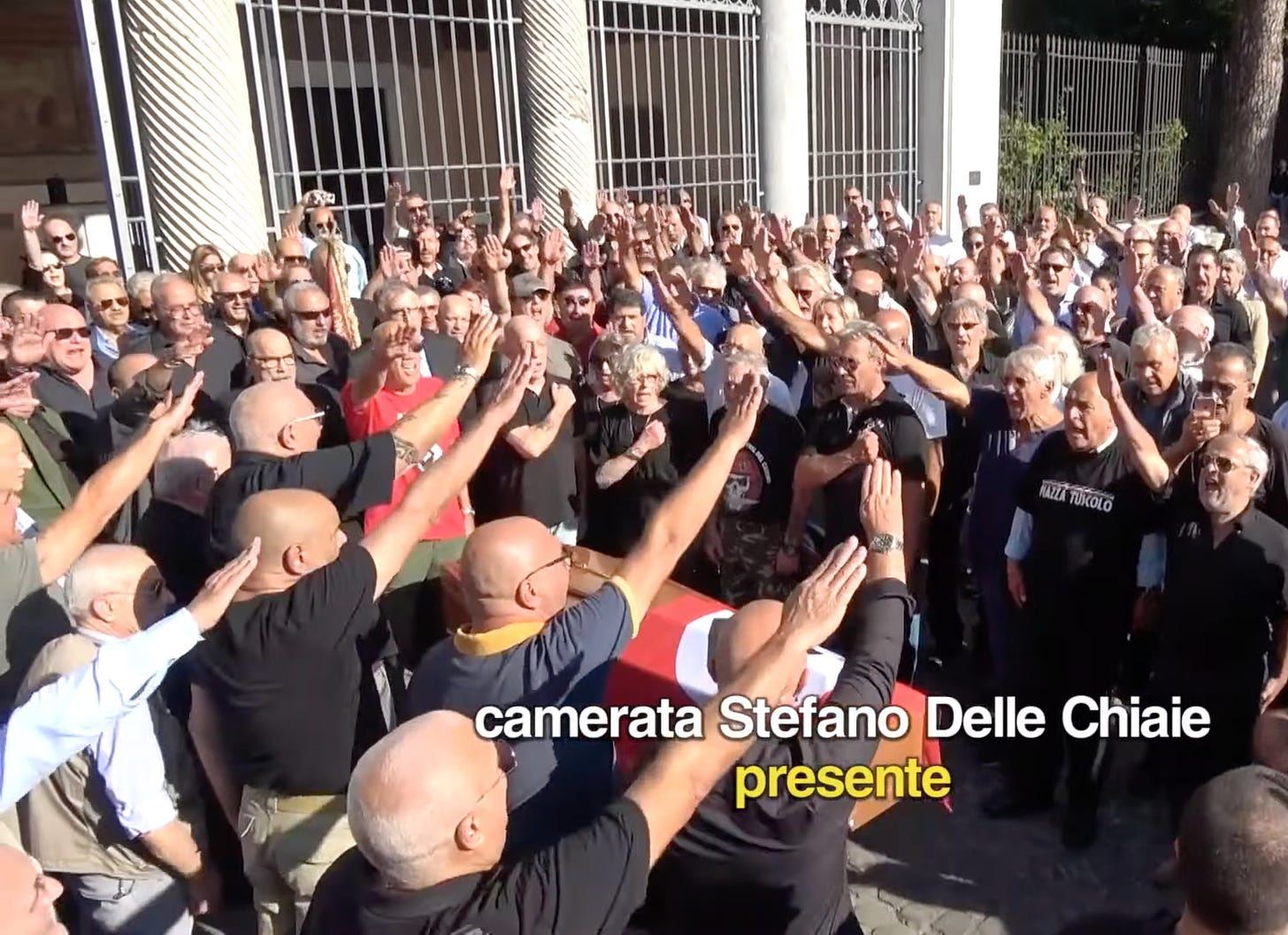How the CIA and Italy's secret state manipulated the right and infiltrated the left
Operation Gladio -- NATO's secret Nazi army -- was used to impose secret control on political life in Europe for decades

Last year Italian prime minister Mario Draghi vowed to declassify government documents related to Operation Gladio.
Gladio was a far reaching state-backed anti-communist paramilitary formation, part of a wider NATO-backed network of far-right terrorist groups across Europe.
But eight months on, very few documents have actually been released.
According to Felice Casson (the former magistrate whose investigations in the 1980s were key to exposing Gladio) it’s highly unlikely that anything important will be released.
“It’s just an announcement,” he told The Spectator. “There is not the courage nor the will to disclose the involvement of foreign powers.”
“Foreign powers” is a reference to the CIA and MI6, who trained and directed Gladio operatives. As I explained a my last piece on Gladio, at the end of World War II, US and British intelligence services spearheaded the creation of a secret far-right terror network across the NATO countries.
The true scale of this secret Nazi army was not revealed until near the end of the Cold War, in 1990, when the Italian prime minister finally admitted its existence.
Supposedly “stay-behind” armies to guard against Soviet invasion, the real goal of the network was political control. The CIA and MI6 wanted to avoid the left’s democratic election to power — especially Europe’s highly popular communist parties.
The recruitment of Nazis and other fascists into the Gladio network was done quite consciously.
The main qualification was hard-core anti-communism. American and British planners knew that ideologically motivated fascists would be the most dedicated to the anti-communist war.
In an extraordinarily frank interview with the BBC in 1992, former CIA intelligence directorate head Ray S. Cline admitted that “some right wing groups were recruited” as “stay behinds.”
He claimed that, “Using right wingers, if you use them not politically, but for intelligence purposes, is okay.”
The imagined Soviet invasion of Europe never came — precisely because it was just that: imaginary. Gladio’s real enemy was the populations of Western Europe — the broad masses and the political left.
In the 1970s, the vote share of the Communist Party of Italy (which had long committed itself exclusively to non-violent electoral politics) rose inexorably. By 1976, it was knocking on the doors of government.
At exactly the same time, beginning in 1969, a series of terrorist outrages struck throughout Europe.
The attacks were usually blamed on far-left groups like the Red Army Faction in Germany and the Red Brigades in Italy. In reality, many (if not most) of these bombings and attacks turned out to be the work of small neo-Nazi and fascist groups who were essentially puppets of the state, NATO and (at arms length) the CIA and MI6 (who we know from testimonies in the 1992 BBC series supplied arms and explosives training to Italian groups).
At the same time as secretly orchestrating these attacks, the governments used these events as pretexts to crack down on left-wing parties that were viewed as a challenge to the capitalist establishment, especially the communist parties of Italy, France and Belgium.
Unlike in Britain, where the Communist Party only ever had modest electoral success, in Italy, Belgium and France, the communists came very close to government after World War II. They had led the partisan resistance to Hitler, Mussolini’s fascists and other Nazi allies.
In 1948 the CIA heavily intervened in Italy’s first democratic election. They successfully prevented the communists from coming to power as part of the Popular Front. Gladio, then still in its infancy, hadn’t been needed. But there was also a mysterious assassination attempt on communist leader Palmiro Togliatti soon after.
Gladio is suspected of being behind a whole series of atrocities in the late 1960s, the 1970s and the 1980s, including the 1969 Piazza Fontana bombing (which killed 16) and the infamous 1978 kidnap and murder of former prime minister Aldo Moro.
Perhaps most infamously, Gladio is suspected to be responsible for the 1980 bombing of the Bologna train station, in which 85 people were killed and 200 injured.

Prime Minister Mario Draghi’s declassification announcement last year was timed to coincide with the 41st anniversary of the Bologna bombing. The bombing is widely believed in Italy to have been orchestrated by Gladio and covered up by the state.
Keep reading with a 7-day free trial
Subscribe to Palestine is Still the Issue to keep reading this post and get 7 days of free access to the full post archives.





